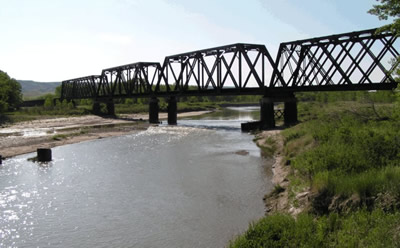
| {column0} |
| {column0} |
“Reach” is an often misunderstood field in HydroBase because of the varying definitions among water resource agencies.
The NWS defines reach as “a section of river or stream between an upstream and downstream location, for which the stage or flow measured at a point somewhere along the section (e.g., gaging station or forecast point) is representative of conditions in that section of river or stream”.
 The USGS defines reach as:
The USGS defines reach as:
- The length of channel uniform with respect to discharge, depth, area, and slope.
- The length of a channel for which a single gage affords a satisfactory measure of the stage and discharge.
- The length of a river between two gaging stations.
- More generally, any length of a river.
The first part of the USGS definition is similar to the NWS definition.
Therefore, when doing fieldwork, look up and downstream of the gage and determine the uniform part of the river.
In addition to the USGS definition, look for anywhere the river bends or the flow becomes constricted.
Note: Other agencies, such as the EPA, define reach as an administrative unit. States also have definitions of reach, such as a segment between confluences.